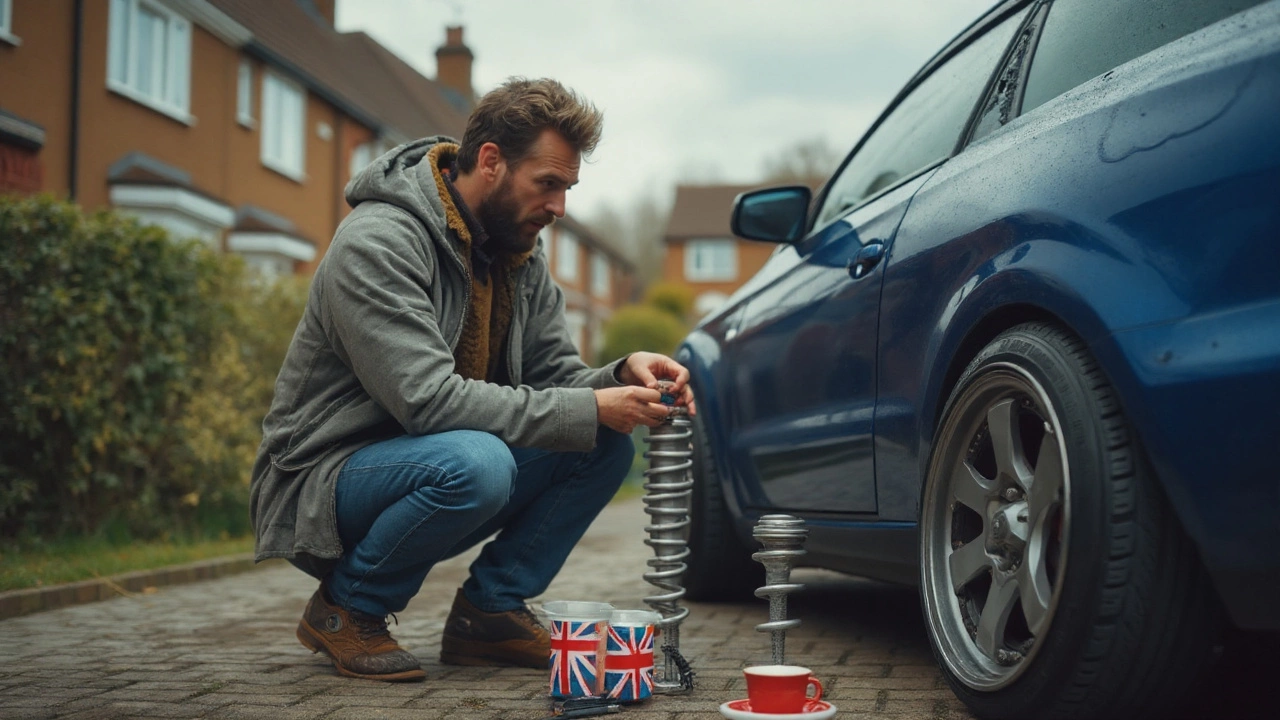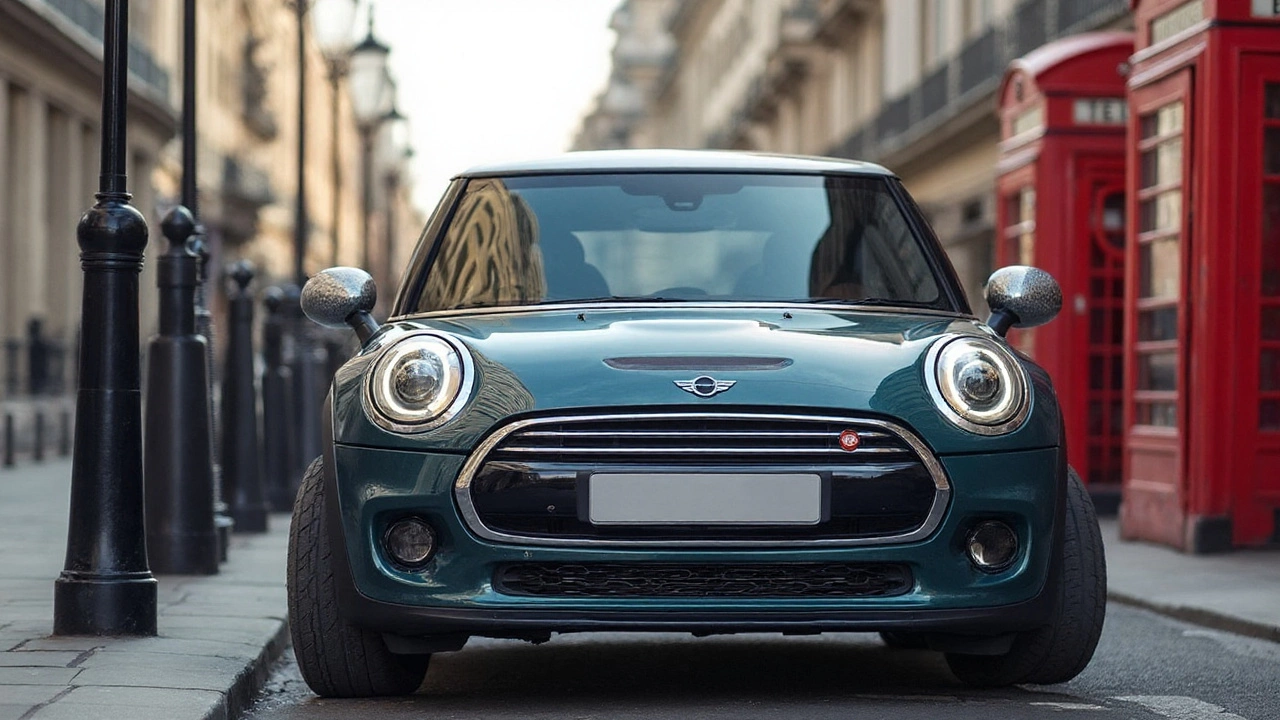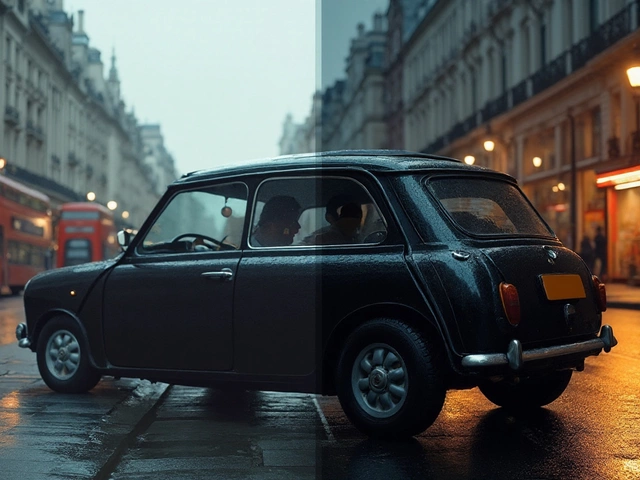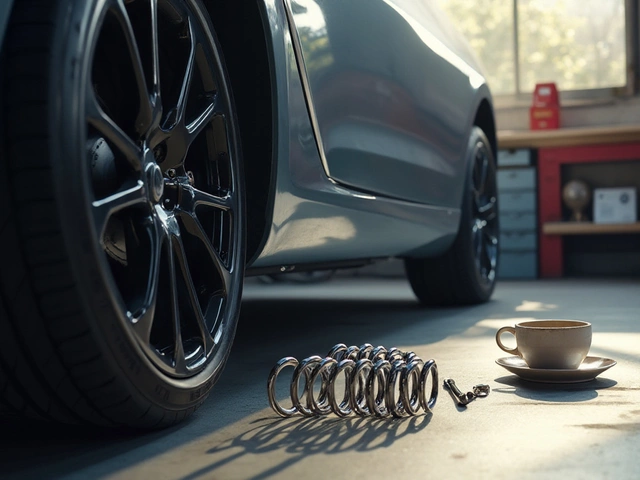If you’ve spent any proper time on car forums or hanging around at small shows in Brisbane, you’ve definitely heard someone say, “Just get some lowering springs, mate.” It sounds dead simple. You see a slammed Mazda3 or a Golf looking mean on the streets, and you start shopping for springs before you’ve even opened your wallet. But is it really that straightforward? Or are there little catches that make the whole project more involved?
How Lowering Springs Work and What They Really Do
First, let’s cut through the sales talk. Lowering springs work by being shorter or stiffer (and often both) compared to your factory setup. Pop them in, and your car sits lower to the ground. The benefits seem obvious: less wheel gap, meaner looks, lower centre of gravity, and, on paper, tighter handling. But it’s not all about looking cool. The effect on your car’s dynamics is real.
Shorter springs pull the body closer to the tarmac, which in theory gives you less body roll around corners, quicker steering response, and sometimes more grip. Less air gets under the car at speed so you might actually get a little bit more stability if you’re pushing your hatchback on the Bruce Highway. Even the standard Corolla can look ready for a magazine cover with a nice bit of drop.
But here’s where people get stung. Lowering springs also reduce the travel your suspension has to absorb bumps. Hit a pothole in West End, and you’ll know what I mean. Spring rates get stiffer, which gives better cornering, but also makes every bump more noticeable. You’re trading some comfort for that sharp look and snappier handling. Depending on the brand, some springs drop a car by 20 mm, others by 40 mm or more. Always check exactly how much your chosen spring will lower the car. If you go too low, you can cause headaches with both comfort and legality.
You also have to watch your tyre clearance. Some cars, especially older Aussie models, have really generous guards, so you might be fine. Others, particularly small city cars or performance cars, will rub on the factory tyres if you go aggressive with the drop. People think you only have to worry about looks, but lowering springs directly affect the geometry of your suspension and how everything lines up. If you just toss them in and go, you could face weird tyre wear and mess up your wheel alignment completely.
And here’s a fun fact: according to an independent report by the Australian Transport Safety Bureau, aftermarket lowering springs can impact electronic driving aids if they change the hub positions outside the range your car was designed for. Think about how stability control or anti-lock brakes might be affected if your suspension geometry is off even a little bit. Suddenly, it’s not just about looks anymore.
Can I Just Buy Springs Without Upgrading Anything Else?
Here’s where the trapdoor opens for a lot of people. Yes, many companies will sell you lowering springs as a stand-alone part. They’re usually less expensive than a full coilover setup and can be fitted in a Saturday arvo if you’re decent with tools. Plenty of people—especially those modding on a budget—think it’s all they’ll ever need. Drop the car, call it a day, job done.
But things are just not that clean. Your factory shock absorbers (the bits that actually dampen the up and down movement) were designed for a certain ride height and spring rate. Stick much shorter and stiffer springs up front, and your shocks have less room to move. As a result, you’re now riding on part of the shock’s working range it wasn’t built for. Over time, this chews out the seals inside your shocks. Instead of gliding over potholes, you’ll bounce, bang, and eventually, leak oil all over your drive.
Another thing: lowering too much throws serious shade on your alignment angles. If you don’t fix your camber and toe (which a specialist needs to do after fitting the springs), your tyres could wear out in as little as 10,000 km. People sometimes ignore this bit, thinking tyres are sacrificial, but four corners of ruined rubber do add up, especially on larger wheels common on newer cars.
Some makes and models respond better than others. European cars—think VW Golf, BMW E46, even a Renault—tend to have more robust factory shocks, so they handle lowering springs better for daily use. Older Japanese cars can be more sensitive. If you’re driving a Subaru Impreza from the early 2000s, for example, you’ll feel every bump if you don’t upgrade the shocks soon after.
The pros suggest buying a matched set of springs and shocks for the best result. A kit from a respected brand like Eibach or H&R is engineered to work together, keeping the ride almost as comfortable as standard while adding the sporty look you’re chasing. Plus, these kits usually come with the paperwork you need for legal sign-off in Australia.
To really get the job done right—and have a car that remains nice to drive—you might need new shocks, fresh bump stops, and sometimes even special bushings. If your car has adaptive suspension or load-leveling gear, dropping the ride even 20 mm can confuse these systems and set off warning lights. I’ve seen it happen on new Mazdas and on Ford Falcons alike. If you ignore the lights, you’re risking even costlier repairs down the road.
Then there are the sneaky costs: if you lower your car, your insurer will want to know. In Queensland, you have to notify your insurance company of any significant suspension mods, and failing to do so could see you denied a claim. There’s also the question of legal height. Most regions in Australia state that your headlights, indicators, and certain undercarriage parts can’t sit lower than a certain number of millimetres off the ground. Get checked by the police, and if you’re under, you’re in trouble. Sure, you could just buy the springs and throw them on, but it’s a gamble you need to be aware of.

What to Watch for When Choosing Lowering Springs
Ready to go shopping? Before you hit “add to cart,” don’t just grab the first set that says they’ll fit your car. Here’s a checklist of what you should keep in mind as you pick lowering springs, based on what’s actually worked for real drivers—not just glossy catalogs:
- Ride Height Goals: Decide exactly how much lower you want your ride. A 25-30 mm drop usually keeps things safe, driveable, and legal. Go more aggressive and you’ll need more mods.
- Reputable Brands: Genuine Eibach, King Springs, H&R, and Tein have been road-proven for years. Cheap ones from mystery brands can put your car and wallet at risk. The metal quality and finish really do matter for durability and ride quality.
- Matched to Your Shocks: If you want to keep using your stock shocks, make sure the new springs are specifically rated for “OEM dampers.” Some are simply too stiff, which means disaster for your factory struts. Always ask your supplier what’s recommended.
- Legal Compliance: In Australia, ADR (Australian Design Rules) compliance is a must, unless you like defect notices and rejections at rego time. Ask for a certificate with your kit.
- Alignment Settings: After fitting new springs, get your car properly aligned at a shop that understands performance suspensions. Tell them exactly how much the car was lowered and ensure your camber settings don’t wear tyres unevenly.
- Clearance and Rubbing: Double-check that your rolling setup matches your new ride height. If you’re running big wheels or wider tyres, try a “test fit” to spot possible rub points before you commit. Rolling your guards could be necessary.
- Insurance and Registration: Update your insurer and confirm it’s legal in your state. Not all mods are street-legal, and it’s painful to be caught out by a technicality after you’ve spent hard-earned money on your pride and joy.
- Warranty: Some manufacturers offer warranties on their springs and matching shocks. This is a huge deal—if anything crazy happens, you want to be covered.
Here’s a tip: If you’re not experienced, have a proper workshop do the job. They’ll spot and fix small issues you’d miss, like perished top mounts or worn ball joints.
What about DIY installation? Yes, it’s doable with the right tools, time, and patience. Spring compressors aren’t toys, though. If you slip while compressing a spring (and you really can), it could shoot off and do real damage. Many seasoned home mechanics still take new springs and struts to a shop for fitting—worth every cent for peace of mind.
Here’s some wisdom from the respected Australian car magazine Streets Machine:
“Getting the ride height right is a balance. Too low and you’ll scrape everywhere, mess with your car’s geometry, and find yourself fixing busted bits every second week. Leave some clearance—you’ll enjoy your car more and spend less at the panel beater.”
So yes, you can just buy springs—but you need to do your homework, or you risk all sorts of headaches nobody wants.
Potential Pitfalls and Real-Life Experiences
I’ve seen everything from perfect examples to absolute disasters. More than one mate has rolled up to a meet in a car lowered on super-cheap springs, only to find they’re scraping every driveway in New Farm and regretting the DIY job the first time their exhaust scrapes coming out of the servo. One fella put lowering springs on his Toyota 86 and, without upgrading the shocks, every single bump sounded like something breaking. He was lucky—the shocks just wore out fast, could have been a lot worse.
Local shops have also warned me about “cheese-cutter” tyres and wild camber angles. Go too far and you’ll do more harm than good. Ever seen a Commodore with tyres worn smooth on the inner edge after six months? That’s from lowering with no alignment fix. For enthusiasts who care more about stance than speed, this can be an ‘acceptable’ trade-off, but for a daily driver, it quickly gets old and expensive. Ride quality matters more than you’d expect during Brisbane’s storm season. Stiff, cheap springs and puddles don’t mix.
If you’re in it for looks alone, remember your car has to get over every speed bump in Chermside and won’t impress anyone stranded with a snapped control arm. Ride too low and you’re also more likely to hit the subframe, exhaust, or oil sump on rough roads. One Brisbane local posted photos of the gouges underneath his nicely-lowered WRX—evidence that our streets aren’t made for showcar heights.
Then, there’s the insurance trap. People don’t always read the fine print. You lower your Golf GTI, forget to tell your insurer, have a bingle, and suddenly your cover goes “poof.” Mods matter, so call them first. And don’t even get started on rego checks. Even a small drop can bring you under the legal minimum, especially once you load up camping gear or extra mates. Get caught by the blue shirts and you’ll have to fix it to get the car legal again, which means double the cost.
Most frustrating for some folks is that, without the right shocks, new lowering springs can actually make the car feel worse! You might get pogo-ing on rough bits of suburban road because the damping force isn’t matched to spring strength. That’s a lesson learned by dozens of owners who tried to go cheap—and paid with a car that handled like a trampoline.
On the flip side, done right, lowering springs can transform a car. Cleaner looks, crisper handling, and even a touch of extra grip in the bends. The trick is patience—plan every stage, ask questions, and budget for more than ‘just the springs’. Nothing wrong with going little by little, tackling one mod at a time and getting it perfect before moving on.
Next time you see a low-slung car parked up at a Queensland servo, look close. The ones riding just right, not bottoming out or wearing through tyres, probably had just as much research put in as cash. That’s the real takeaway from this whole debate. Lowering springs aren’t magic. They’re just one part of a bigger, more interesting story about making a ride your own.






